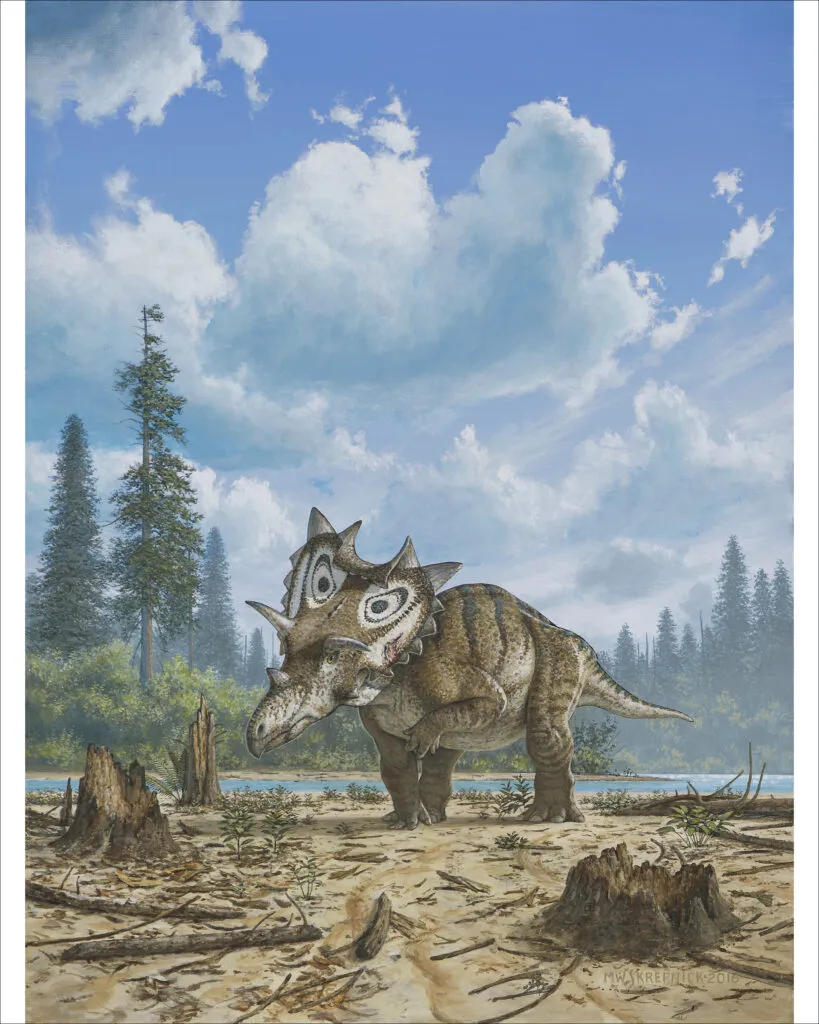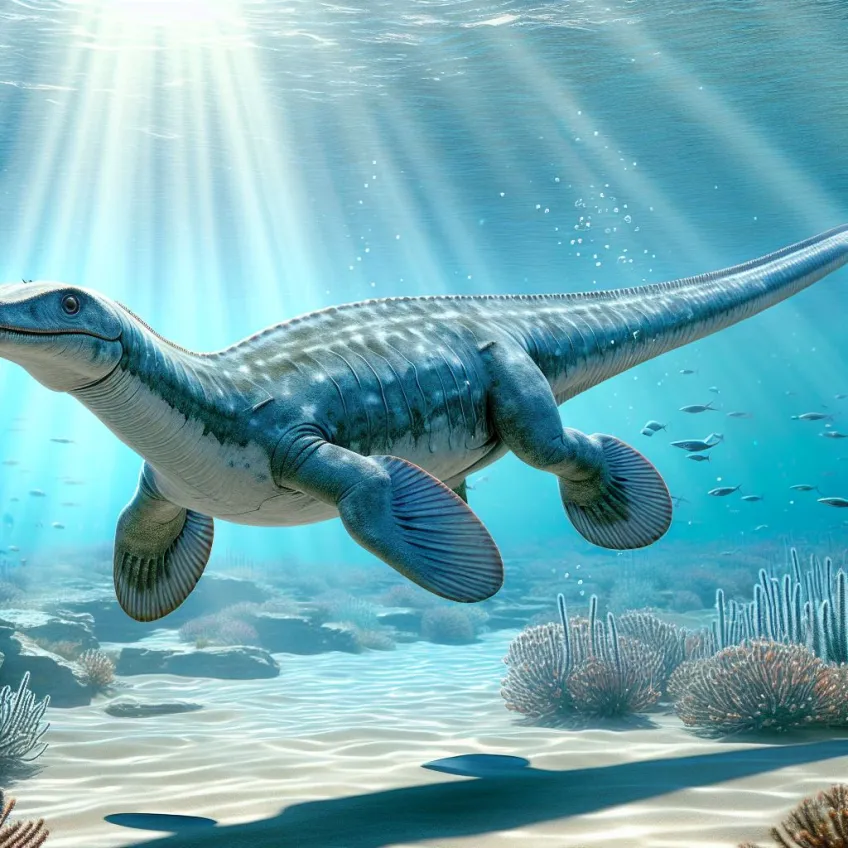Osteoarthritis in Dinosaurs
Large Study Involving Multiple Dinosaur Species
In a U.S. study, paleontologists examined the occurrence of osteoarthritis in several dinosaur species. By analyzing fossilized skeletons, they revealed that multiple species suffered from this painful joint disease.
The study showed that herbivores such as hadrosaurids and ceratopsians often exhibited signs of osteoarthritis. These animals had large bodies and likely lived long lives—two factors that increase the risk of joint disease. Even some theropods, carnivorous dinosaurs like Tyrannosaurus rex, showed signs of osteoarthritis, particularly in the tail and hips.
Kritosaurus, a member of the hadrosaurid family
Image: Nobu Tamura (http://spinops.blogspot.com) – Own work, CC BY 2.5, https://commons.wikimedia.org/w/index.php?curid=19459599
The Dinosaur Judith
When researchers in Kansas analyzed the skeleton of the dinosaur Spiclypeus shipporum, nicknamed “Judith” after the Judith River Formation where it was found, they discovered something unexpected—clear signs of osteoarthritis and other bone changes.
They observed that Judith had a severely diseased upper arm bone (humerus). The bone showed extensive signs of osteoarthritis and a bone infection. A large hole had developed near the elbow to drain the infection. With her left forelimb rendered unusable, Judith almost certainly lived in pain and was likely forced to limp around on three legs.
Birds
By analyzing large fossil samples of early Cretaceous birds in China, researchers have been able to study how frequently osteoarthritis occurred in one of the earliest bird groups.
The study shows that osteoarthritis was rare among birds during the Cretaceous period, except in Caudipteryx, where the prevalence was significantly higher than in other species from the same period—around 30%. These results reflect what is seen in modern birds, where certain species have a high incidence of osteoarthritis.
Caudipteryx. Image: Wikipedia
Platecarpus
The first case of polyarthritis (inflammation in multiple joints) has been found in a skeleton of a Mesozoic Platecarpus, discovered in Kansas. All joints in the left big toe (hallux) of this reptile are deformed by osteoarthritis. Microscopic examination of the bones reveals a pattern similar to modern osteoarthritis, with increased vascular spaces and bone growths at joint margins—typical features of the disease.
Platecarpus. Image: AI-generated
Osteoarthritis Persists Despite Millions of Years of Evolution
The discovery of osteoarthritis in dinosaurs offers a unique insight into how diseases have affected living organisms throughout history. It shows that osteoarthritis is not merely a modern disease but has existed for around 130 million years. The fundamental structures of joints—such as cartilage and synovial fluid—and their functions have remained so similar over time that the disease still arises in joints today, despite millions of years of evolution.
Special thanks to The Canadian Museum of Nature for the image of Judith.
Publications:
https://www.sciencedirect.com/science/article/abs/pii/S0195667111002084
https://journals.plos.org/plosone/article?id=10.1371/journal.pone.0154218
The history of osteoarthritis-osteoarthrosis - ScienceDirect






